Richard Silver splices images of iconic buildings to show the passing of time
Photo essay: New York photographer Richard Silver travels the world shooting well-known buildings over the course of a single sunset and splicing the pictures together to create a single image – a technique he describes as slicing time.
Silver's Time Slice photography series is an ongoing project that began in the photographer's native New York as an idea for a book and has evolved into a bigger project during his extensive travels for his job. Among the buildings he has "sliced" so far are Herzog & de Meuron's National Stadium in Beijing, the Marina Bay Sands hotel in Singapore by Moshe Safdie, and Istanbul's Hagia Sophia basilica.
In this essay for Dezeen, Silver explains the lengthy process behind the creation of each image, which involves taking up to 60 identically framed individual shots over the course of an evening.
The idea behind the Time Slice project was to photograph iconic buildings over the course of a sunset, and assemble them to capture the changing light from day to night in a single image.
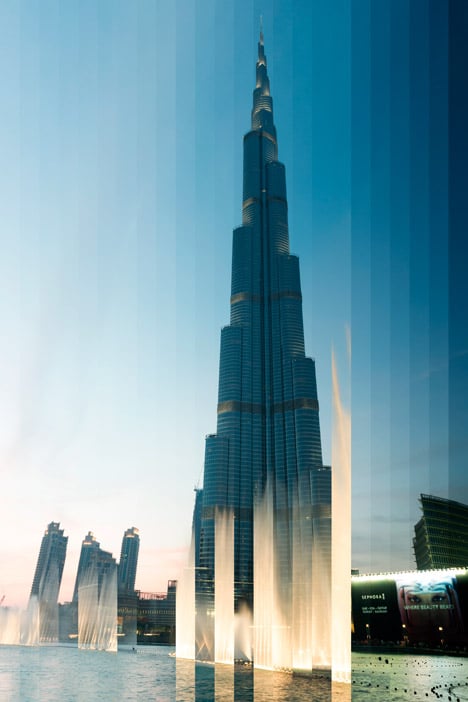
The project started in 2010 in New York, where most of my ideas start. I originally decided to photograph iconic buildings in the city with the intention of producing a book of individual photos chronicling the progression of the sun in the evening as the pages turned. But I quickly realised that I wanted to try something more complicated, and find a way to capture the sunset in one final image. So I decided to slice up pictures of the same building at different times and with different light qualities to show the passing of the day from left to right. I liked the results so much that I've just carried on doing it.
I've had a number of different jobs over the years – I've worked in computers and on Wall Street – but decided to go full time with my photography in 2011. Although the project started in New York, I am now a travel photographer so I visit a lot of different locations. Last year I visited 13 different countries.
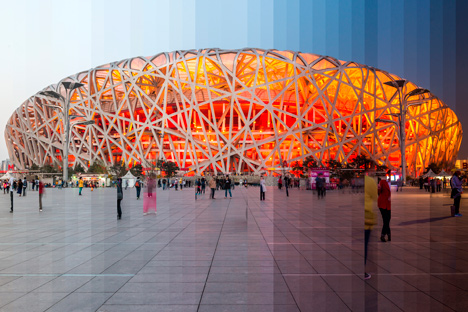
Once I've chosen a place, I then figure out which building is iconic for the location; I always do some research on how important the structure is to that place to make sure it is the quintessential building. I try to do a Time Slice photo from each city I go to, to build as large a portfolio as I can.
I never really thought about the effect "time slicing" has on the architecture until I shot the Gateway to India in Mumbai. The light cast by the sunset on the Gateway was so linear to the structure that I needed to take extra photos so it would not interfere with what I was trying to accomplish. The vertical lines of sun, because of the other buildings, almost made some of my photos rectangular, with the lines of light going north to south and across the gateway.
I had the same feeling in Milan with the Duomo. What it does show in some of the marble structures is the beauty of the yellow colouring of the stone. The tones of glass structures tend to be less dramatic.
I find shooting at sunset much more enjoyable than sunrise. I always try and be at my location at least 45 minutes before the sun actually sets. I need some time to pick my exact spot, set up my camera and sometimes fight the crowds that might be there.
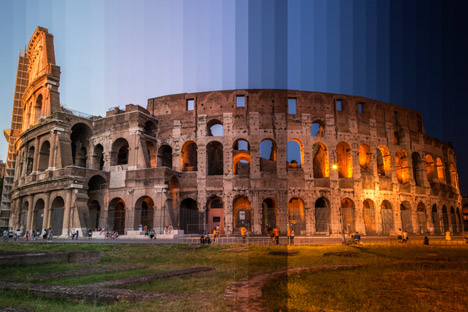
I set my camera up on my tripod and use a remote control to take the photos so that nothing moves the camera and ruins the final symmetry – every shot has to have exactly the same framing. I use a Nikon D800 camera and usually set it to aperture priority, which allows you to control the amount of light entering the camera while still using the device's automatic shutter speed. I set the sensitivity at 100 ISO and my f-stop setting is between f8-f11.
I pretty much shoot at random, reacting to changes I observe as I stand in that spot – for example if light changes or someone moves within the frame of the image. Towards the end of the shoot, I usually change the settings to full manual mode for more control, as it gets very dark. I carry on shooting for about half an hour after the sun actually sets.
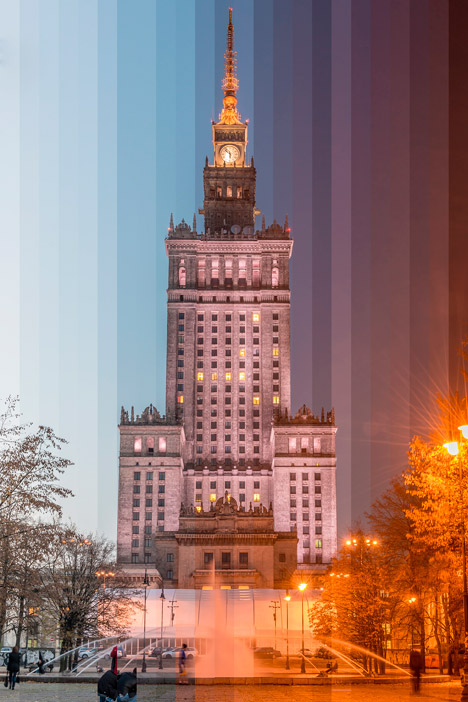
There's usually around 40 to 60 images to process from each shoot, and I use around 36 in the finished Time Slice image. I load them into a programme called Lightroom to do a basic edit, and then finish off the process in Photoshop.
I need the weather to be clear when I shoot, with no clouds and no rain as these tend to obscure the changing colours of the sky – the bluer the sky when I begin the shoot, the better. When I first started the series in New York I went out on a pretty clear night, but then the clouds rolled in and it was just a waste of time. I've also tweaked my process over time and have gone back to three locations in New York to reshoot those buildings.
It does helps to get to the location on time – on a few occasions I've been late and missed the full spectrum of colour and light changes in the sky and across the building.
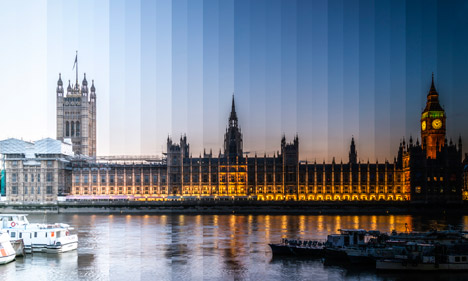
Finding the right spot to shoot in can be difficult too. Sometimes you don't realise you haven't got the right shot until you've already started. Too many people is one of my favourite problems. That happened in Dubai and I had to charm my way to the spot needed for me to take my photos.
I wish I'd figured this technique out before I went to Petra, Machu Picchu and Tokyo, amongst other places. I am dying to shoot the Eiffel Tower, which I feel was meant for this series, and I think I am heading to Moscow at the end of the month to shoot St. Basil's and the Kremlin.